Call 01306 744 656 or
Call 01306 744 656 or
Every year, Kenya and Tanzania host the most epic wildlife show on the planet: The Great Migration. Depending on when and where you visit, you’ll encounter thousand-strong herds of wildebeest, zebra and gazelle on the move, mass calving, big cat hunts and daring river crossings. Here’s the lowdown on how to experience this world-famous wildlife spectacle.
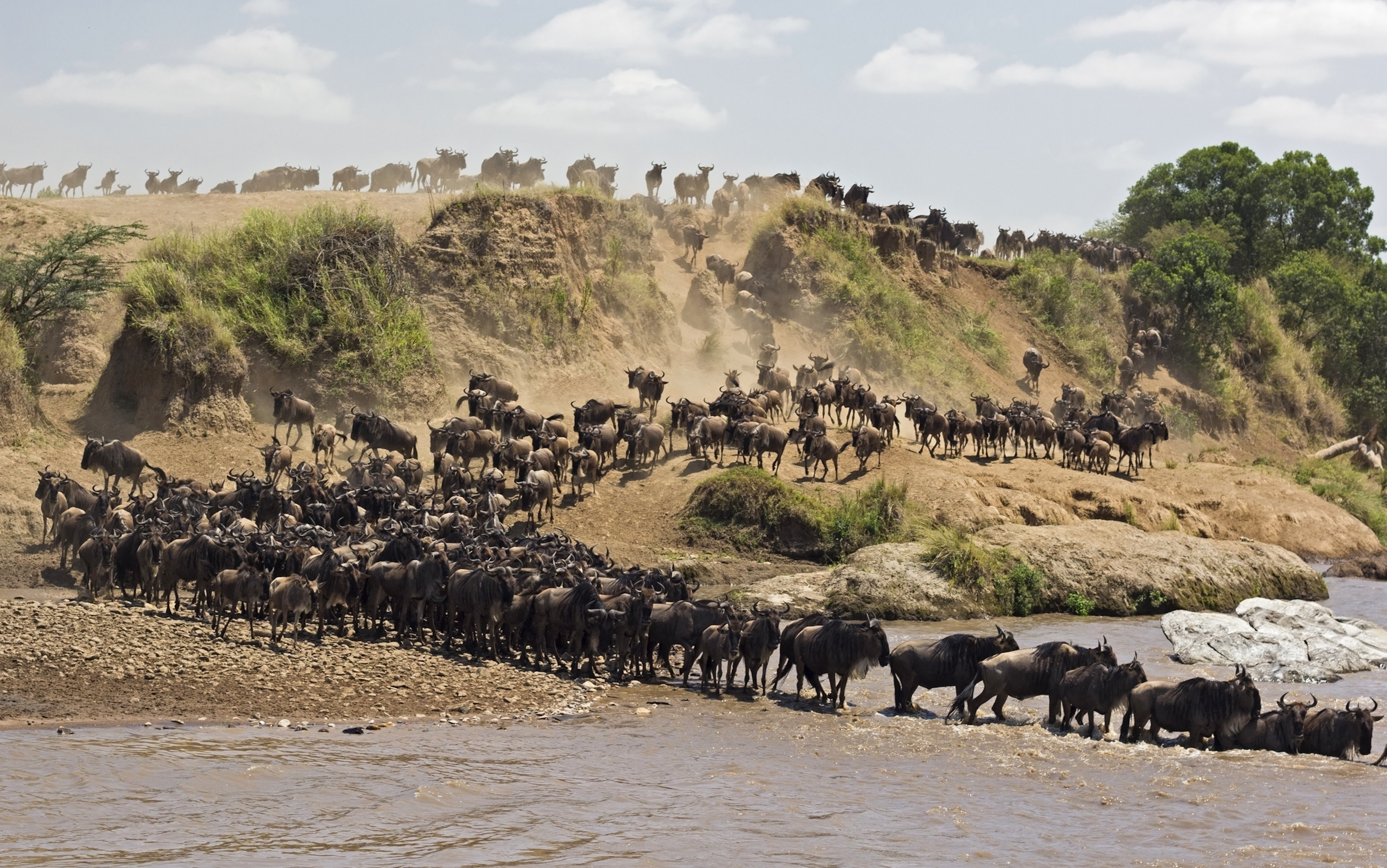
What is the Great Migration?
Every year, over two million wildebeest and enormous herds of other grazing game make the 1,800-mile pilgrimage from Tanzania’s Serengeti to the Maasai Mara in Kenya and back again. Why? The herbivores have a natural instinct to follow the rains and search out lush grasslands. The Great Migration is the largest mass movement of land animals on the planet and one of the Seven Natural Wonders of Africa; it’s an age-old journey through one of the world’s oldest ecosystems.
What wildlife can you see during migration?
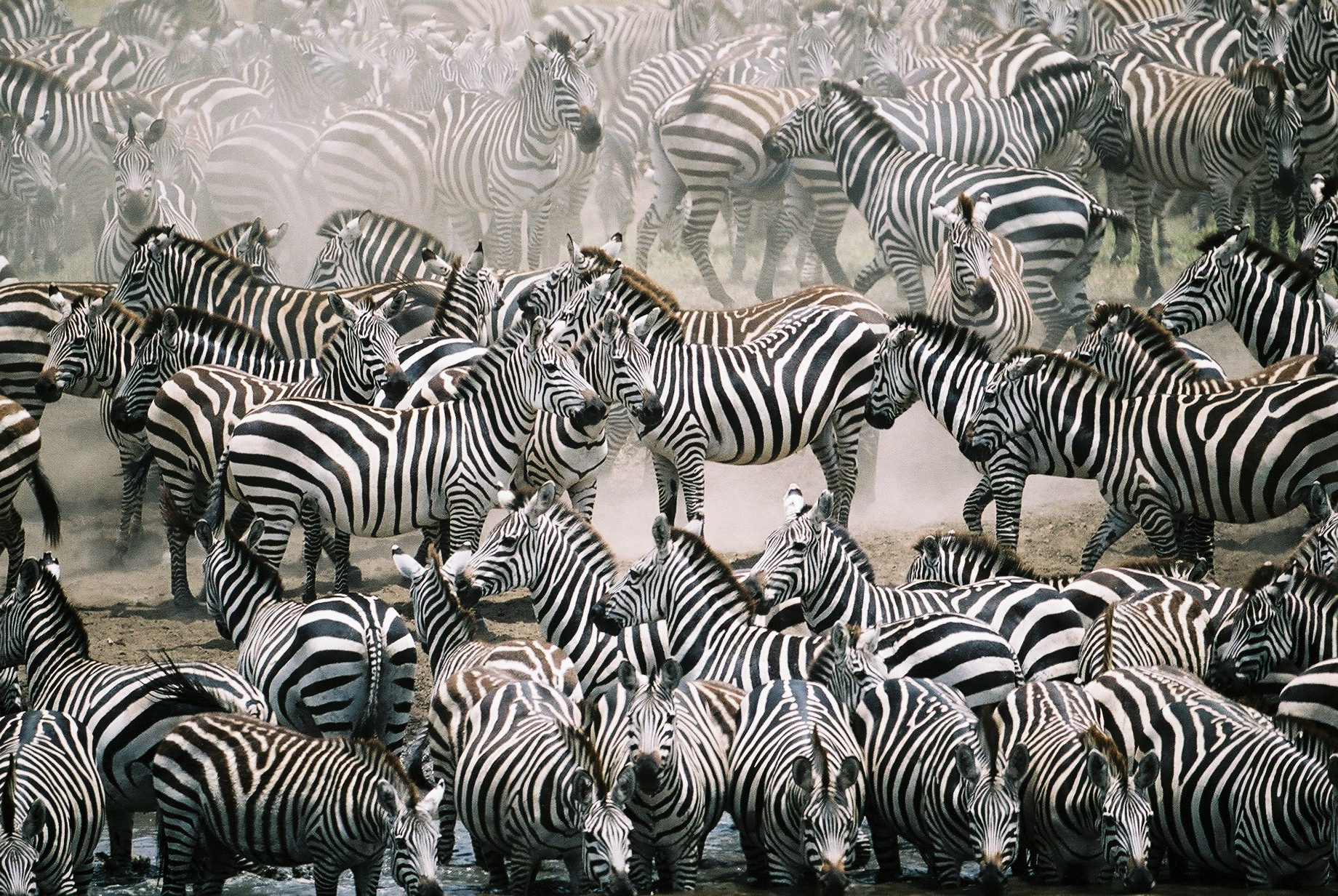
Aside from the colossal herds of wildebeest, thousands of zebra, Thompson’s and Grant’s gazelle, eland and impala make this monumental voyage. Then there’s the fierce predators that follow this moveable feast; think lions, cheetahs and hyenas. Vultures circle above, waiting to pick carcasses clean and crocodiles lurk in murky rivers, ready to pounce when the herds dare to cross.
What are the river crossings?
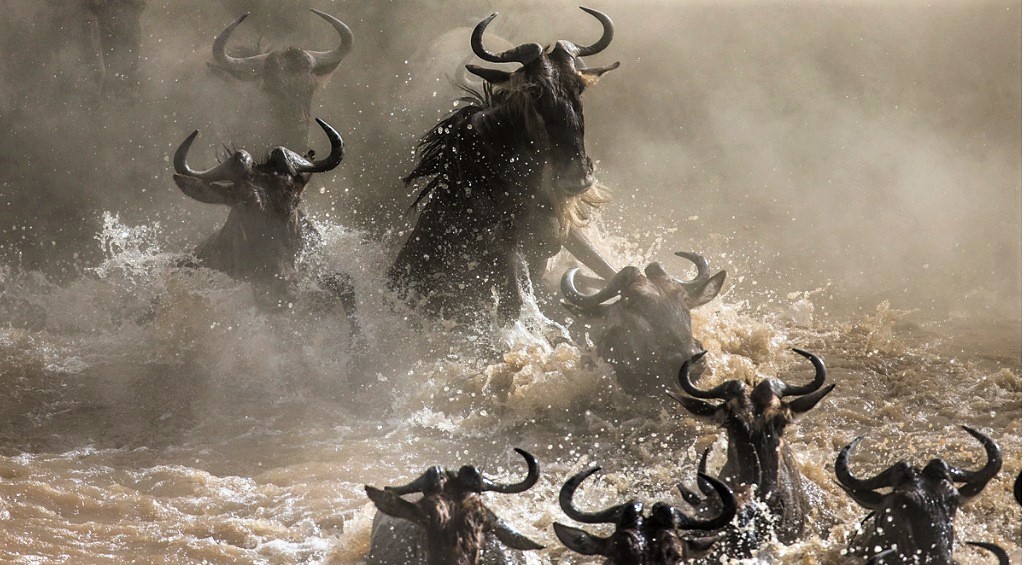
For many, the most dramatic moments of the Great Migration take place at the Grumeti and Mara Rivers. Poised on rocky banks, the herds plunge into the water, fighting powerful currents and the snapping jaws of Nile crocodiles. River crossings are unpredictable and can be a waiting game – sometimes, the animals look ready to dive, then make a last-minute retreat. It’s worth the wait, though, to experience this live-action wildlife show.
Where and when can you see the Great Migration?
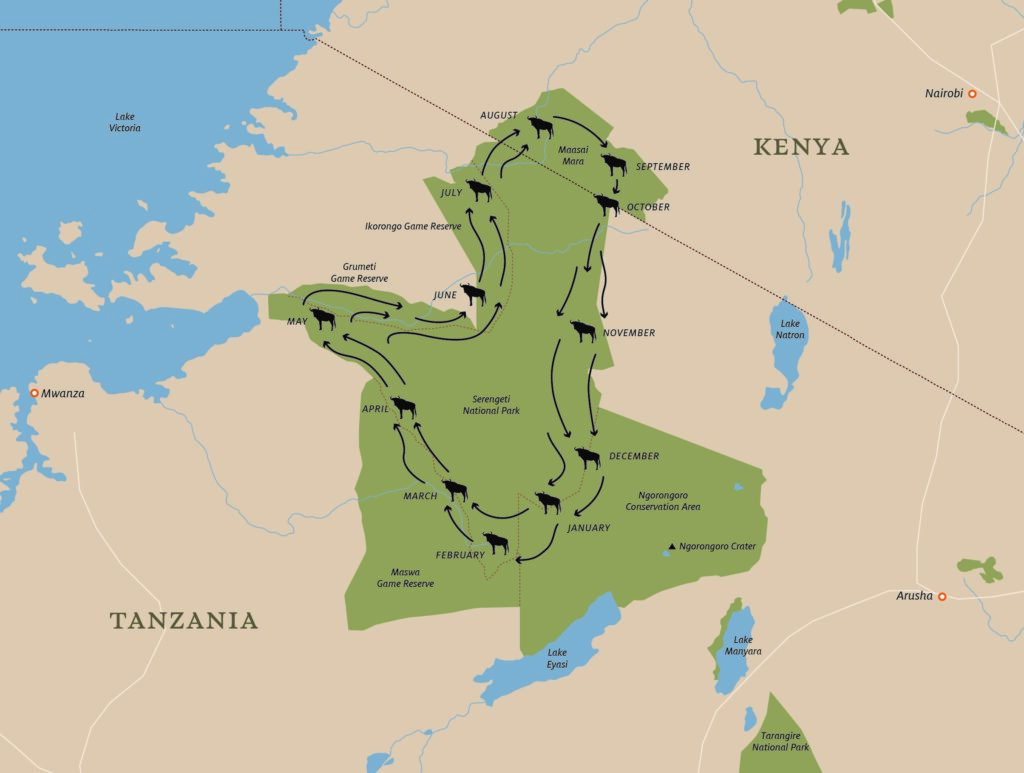
The Great Migration follows an annual cycle that varies slightly depending on rainfall patterns. This means the herds are visible in different areas of the Serengeti and Maasai Mara throughout the year; here’s a breakdown:
January – March: herds can be seen in the southern Serengeti and Ndutu plains of Tanzania, where they gather to calve in February. Visit during this time and you’ll have a chance to see up to 500,000 baby wildebeest, resulting in heart-in-your-mouth big cat and wild dog hunts. This is a particularly good time to spot elusive cheetahs as they chase down prey.
April – May: as grazing ground grows sparse in the south, the herds start moving toward the central and western Serengeti.
June – July: the animals push further north, assembling at the Grumeti River in the Serengeti, where the numbers build to breaking point before plunging across the river’s network of channels. July also sees the first Mara River crossings into Kenya, meaning safaris in both northern Tanzania and the Maasai Mara are popular.
August – September: this is prime time for wildlife watching in the Maasai Mara. Herds cross the Mara River almost daily during this period, making it the busiest time for safaris with full camps and plenty of 4x4s roaming the plains.
October – December: the action dies down in the Maasai Mara in October, when animals start heading south again. However, this can be a quieter time to witness the tail-end of the migration. The Serengeti short rains begin in November when herds arrive on the park’s grassy southern plains, ready to start the cycle again.
Where should I stay to witness the Great Migration?
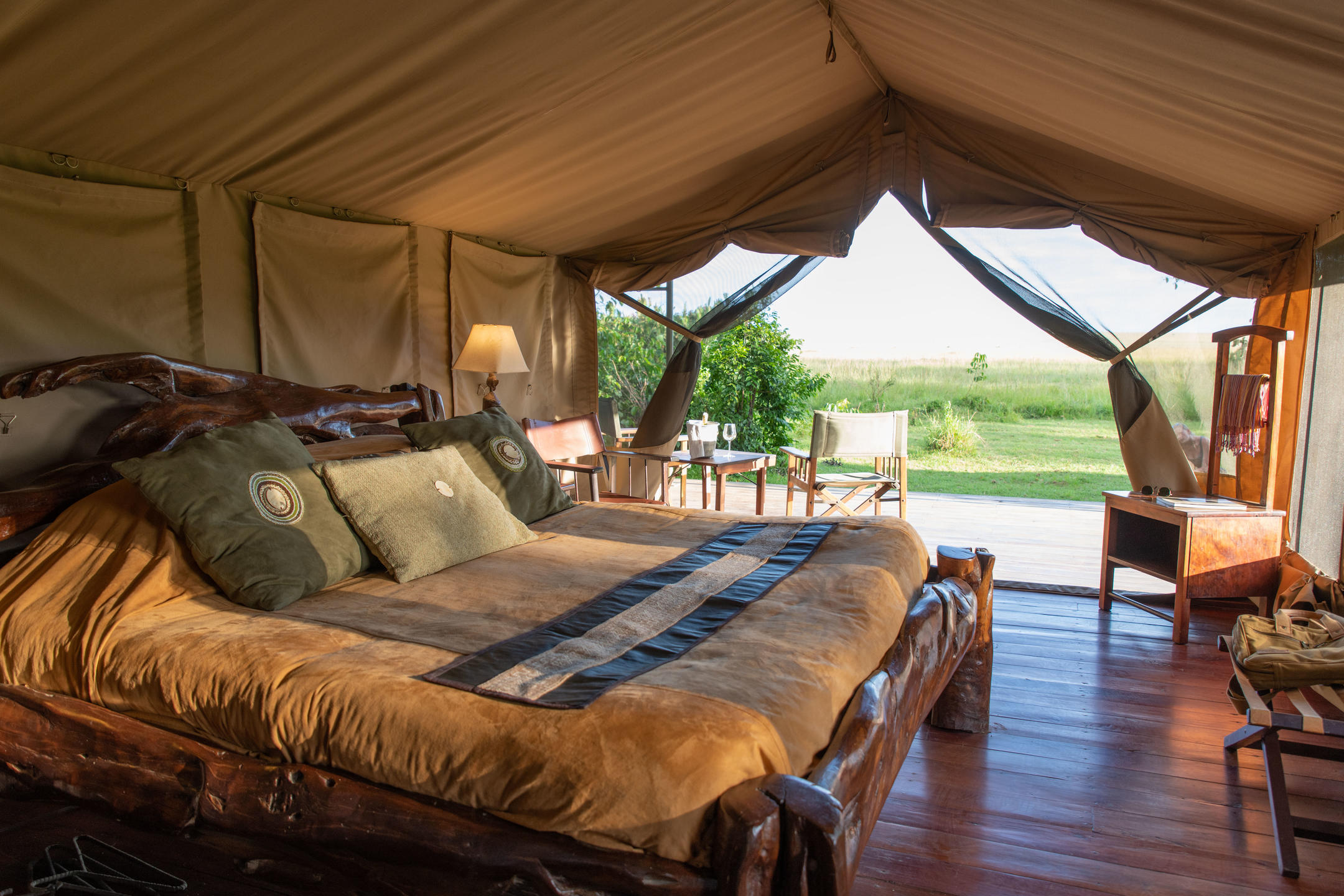
Most camps in the Maasai Mara lie near the Mara River for convenient migration sightings. Governors’, Africa’s original tented camp, sits on its banks, a half-hour drive from the migration’s main crossing points. The river draws animals to the unfenced camp all year-round, including the famous Marsh lion pride of BBC’s Big Cat Diaries fame. Your stay includes daily game drives and you can arrange optional walking safaris, visits to Mara Rianda village and sunrise hot air balloon safaris that provide a bird’s eye view of the migrating herds. For a sense of the sheer expanse of the migration the cliff-top view from Mara Engai Lodge reveals the magnatude of this epic animal parade or if you’re travelling with children the family-friendly fenced Sarova Mara Game Camp is also close to the river. The kids club activities on offer here will really bring this natural phenomenon to life for children of all ages.
In Tanzania, mobile camps follow the migration throughout the year. Solar-powered Roving Bushtops has eight luxury tents, set in the central Seronera region’s river valleys for part of the year, heading to the southern Kusini region between December and March to witness the wildebeest calving. Similarly, Lemala Ndutu Camp moves from Ndutu for calving to its Mara Camp between June and October. There’s also a superb selection of permanent lodges like Elewana Serengeti Migration Camp, which lies just 500 metres from Grumeti River, perfect for river crossing viewings.
Did you know there are other wildlife migrations in Africa?
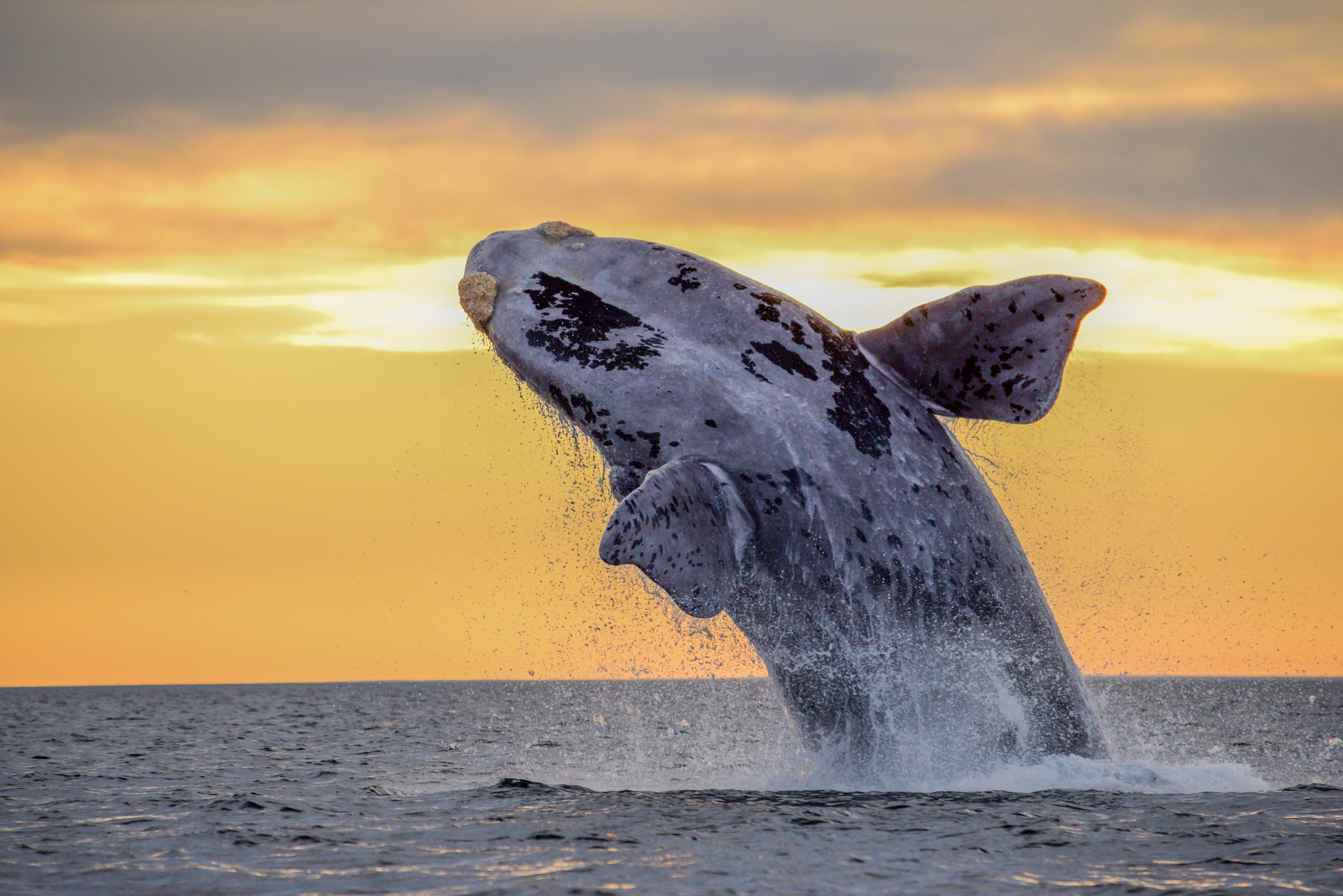
The Great Migration isn’t the only wildlife show worth watching in Africa, here are some more extraordinary animal migrations to experience on the continent:
Zebras in Botswana: this recently rediscovered migration sees thousands of zebras migrate from the north across the Kalahari Desert to the Makgadikgadi salt pan, arriving in January. Experience it from lodges like Leroo La Tau, where you can lie in bed and watch hippos, elephants and zebras feeding around the Boteti River below, with huge herds visible from January until April.
Whales in South Africa: South Africa has some of the best land-based whale watching in the world. From June to December, you can spot southern right whales mating and calving in the bay that stretches from Hermanus along the coast. This is peak time for whale watching boat adventures. Visit in September and you can catch the week-long Hermanus Whale Festival, a celebration of music, food, whale sightings and eco-activities.
Elephants in Tanzania: over 4,000 elephants roam the baobab-studded plains of Tarangire in herds of up to 600. During dry season from July to October, thousands more journey to the waterholes and Tarangire River. Park beside the water on a safari from lodges like Tarangire Treetops to watch the elephants bathing, grazing and drinking.
To start planning your holiday, call us on 0808 239 0555, contact one of our experts or arrange a phone or video appointment.
Your journey will start with one of our UK team – someone like Becky, who's travelled extensively in Kenya. They’ll shape your ideas into the trip of a lifetime. But they won't do it alone. They'll draw on the expertise of our contacts on the ground, connecting you to the people who'll make your holiday one you'll always remember - the safari rangers, local village chiefs and camp managers you'll be talking about for years to come. Start planning today, call us, email an enquiry or arrange a phone or video appointment for ideas and advice.
Freephone an expert 01306 744 656